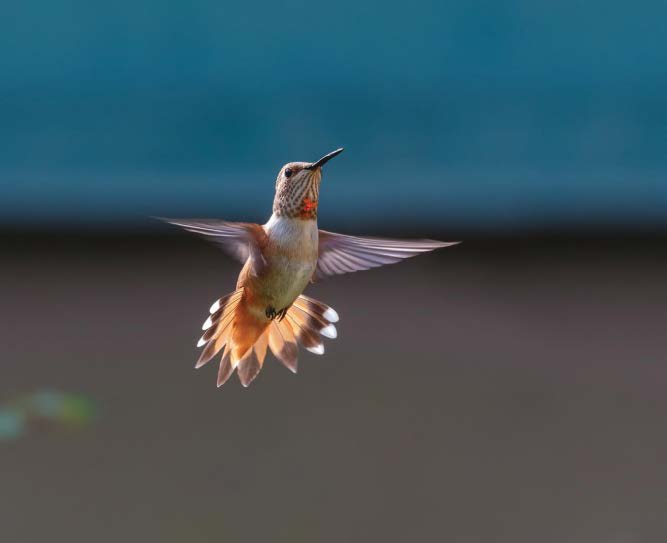in fact migratory: Only individual birds change. American robins that nest in Tennessee may head for Tex-Mex regions when days get shorter—to be replaced by robins that spent the summer in New England.

Photo: Devonyu/Getty Images
Tiny hummingbirds are major long-distance flyers. The 3.1-inch rufous hummingbird flies 3,900 miles (nearly 78.5 million times its body length) from Alaska to Mexico.
• Every avian order has long-distance migrants. The yellow-bellied sapsucker (a woodpecker), which spends summer in Canada and the northeastern United States, flies as far south as Panama for the winter.
• Raptors (birds of prey) migrate, too. Hawk Mountain in Pennsylvania, Pack Monad nock mountain in New Hampshire, Smith Point in southeast Texas, and Hawk Ridge in Duluth, Minnesota, are famous for their autumn "hawk watches," where thousands of hawks (and kites, falcons, vultures, and eagles) pass overhead daily. In Canada, try Holiday Beach Migration Observatory in southwest Ontario.
A FLOCK OF FACTS
• If "migration" is defined as an annual journey of significant distance to and from the same geographical area, fewer than half of bird species actually migrate. Irregular "migrations," called "irruptions," occur when birds temporarily relocate due to changes in food supply or weather. If new conditions persist, irruption travelers may stay permanently.
• True migrants don't follow the food supply, at least not by conscious decision. They start south before any reduction in food (or bird feeders) becomes obvious, responding to subtle atmospheric and daylight differences.
• Songbirds are usually most active by day, but during migration, they do most of their long-distance travel at night. (One reason: There's less risk that hungry hawks and falcons will spot them crossing open areas.)
• Birds in zoos retain migration instincts. During travel seasons, they become restless and stay on whichever side of their cages matches the direction in which they "should" be flying.
• According to scientists, the number of birds in the United States and Canada has declined by